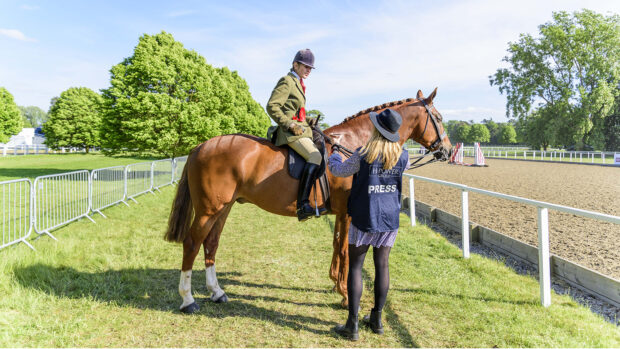Q: I hope to work as a groom when I finish my training this summer. Will taking the large goods vehicle (LGV) test make me more employable?
BEFORE the second European Council directive on driving licences in 1997, anyone with a standard licence could drive 3.5-7.5-ton vehicles. However, since the changes, drivers who passed their car test after 1997 have only category B entitlement for vehicles up to 3.5-ton and with no more than eight passenger seats.
Therefore, in order to drive bigger vehicles, they must apply for higher categories to be added to their licence. These include C1 entitlement, allowing a person to drive a vehicle with a maximum permitted weight between 3.5-7.5-ton, and the large goods vehicle or LGV (formerly known as HGV) category C licence, allowing a person to drive all rigid trucks.
Whether you passed your car test before or after 1997, you need to apply for a provisional entitlement to be added to your existing car driving licence, in order to take the LGV category C test.
Having your LGV licence is worth its weight in gold, according to Lucy Katan, executive director of the British Groom’s Association, which launches today.
“I’d advise any groom considering taking their licence to go straight for the LGV Category C,” she says.
“Grooms who have it are definitely more employable. Some employers will fund LGV training for their staff, although many grooms self-fund the test, as it is an investment.”
According to the managing director of the Organisation of Horsebox and Trailer Owners (OHTO), Jon Phillips, the process of becoming legally able to drive a LGV is relatively straightforward, providing you are aged 21 or over.
“You need to get a provisional entitlement added to your existing driving licence, plus a photocard ID, if you don’t already have one,” he explains.
“The forms you require are D2, which is an application for an LGV licence, plus D4, a medical report. The forms are available to download from www.direct.gov.uk/motoring, from the Driver and Vehicle Licensing Agency (DVLA), traffic area offices and DVLA local offices.
“Higher medical standards must be met by those applying for LGV entitlement, so you therefore need to arrange and pay for a medical examination with your doctor, who should complete form D4 as required. The forms should be sent to the DVLA with your licence.”
Once you have been granted provisional entitlement, contact your nearest driver training school for an assessment, plus theory and practical driver training — visit the OHTO’s website, www.horsebox-rescue.co.uk, and click on “driving instructors” for a list of instructors.
Once suitably experienced, you can take the LGV theory test, then the rigid LGV practical test. The DVLA booking service line is 0870 0101372.
Training doesn’t come cheap — it will cost around £1,000 for 20hr of training with a reputable training school, according to LGV training provider Clearstone. The theory test costs £32, while the practical test is £73.50.
However, the British Horse Society (BHS) has launched an initiative to offer training at a fraction of this cost, in association with Clearstone and Skills for Logistics. The scheme will allow 150 women in the horse industry to obtain their licence for around £400.
Funding is restricted and time sensitive — contact the BHS (01926 707782 or 01926 707781) or visit www.bhs.org.uk
Information
Driving Standards Agency Tel: 0115 901 2851 www.direct.gov.uk/motoring
British Grooms Association Tel: 0845 331 6039 www.britishgrooms.org.uk
Clearstone Tel: 0800 781 8313 www.clear-stone.co.uk
OHTO Tel: 01488 657651 www.horsebox-rescue.co.uk
This Q&A was first published in Horse & Hound (3 May, ’07)



